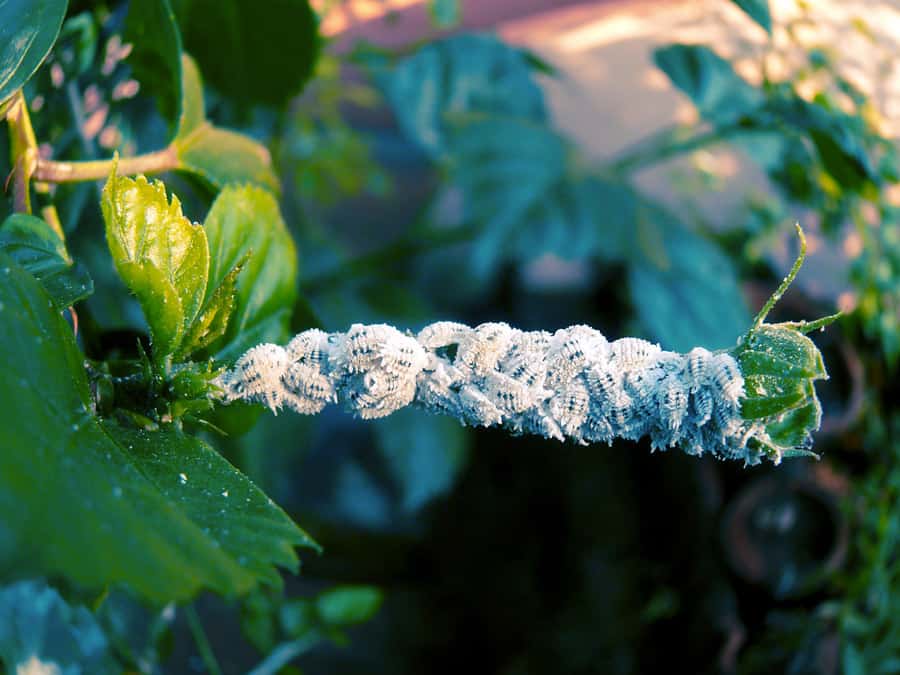Mealybugs occur in two different forms depending on their sex: female adults are wingless soft, oval, flat-bodied insects covered with a white, powdery wax (hence the name ‘mealy bug’), while males are winged wasp-like flying insects as adults. The most common species in the greenhouse is the citrus mealybug, Planococcus citri.
Mealybugs
Biology
The females go through the stages of egg, three nymphal stages and adult insect; the males go through egg, two nymphal stages, false pupa and adult insect. A female can lay up to 500 eggs in a cotton-like pouch made of wax threads after which it dies. The eggs hatch into young bugs called crawlers which disperse to find suitable feeding sites and then begin to feed on plant sap. This is the most susceptible stage to chemical pesticides as they do not have the waxy covering. The length of the lifecycle depends on temperature and takes 90 days at 18°C and 30 days at 30°C.
Damage
Mealybugs, like aphids and whiteflies, suck sap from the plant’s phloem tissues causing stunting, leaf deformation and sometimes yellowing. They also excrete honeydew that serves as a substrate for black sooty mold development , affecting photosynthesis and aesthetic value of the plant.


